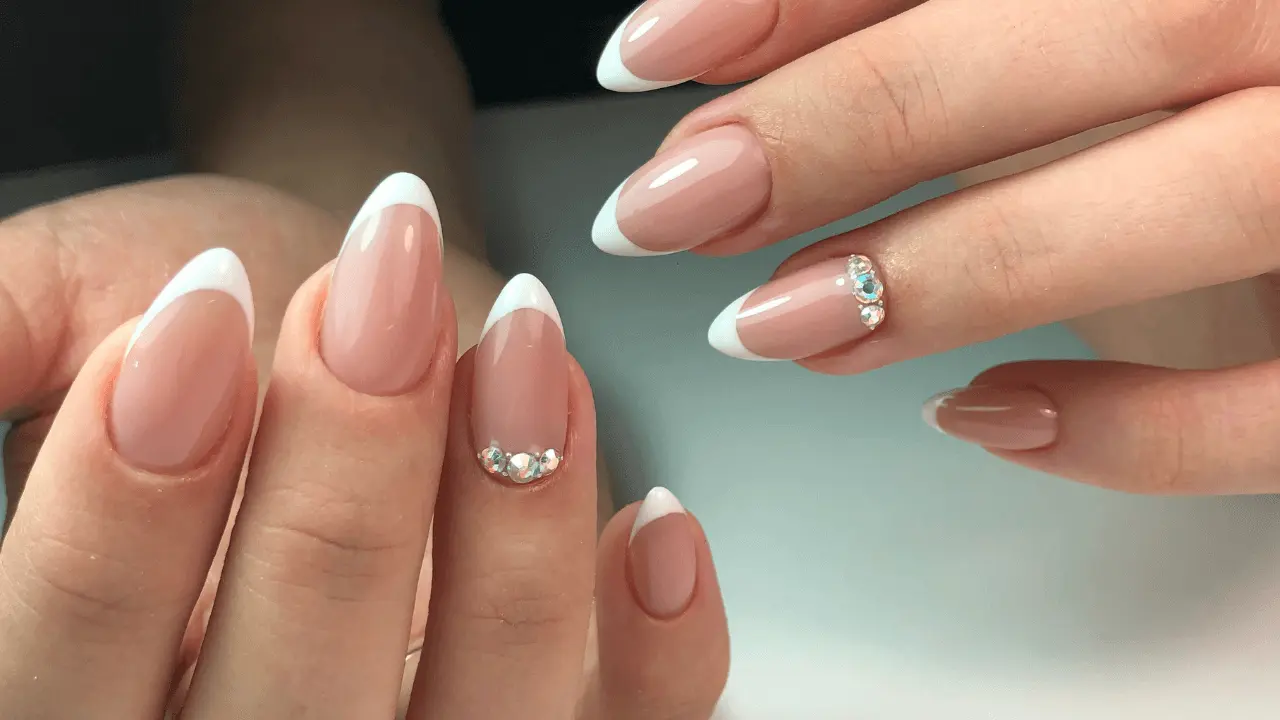How to Prevent Nail Polish from Staining Your Nails

For Distributors & Wholesalers
We welcome partnerships with distributors and wholesalers who wish to expand their business with a trusted and growing cosmetic brand.
Why Partner with Avlon International?
- Wide range of cosmetics: Nail polish, mascara, kajal, eyeliner, liquid lipstick, lipstick & more.
- Premium quality with competitive wholesale pricing.
- Attractive margins and fast-moving products.
- Assured support with marketing materials & promotional offers.
- PAN India shipping with secure packaging.
📦 Minimum Order Quantity (MOQ): 1 master carton (72 trays)
💰 Special Discounts: Available for bulk & long-term partners.
🚚 Dispatch & Delivery: PAN India in around 10-15 days.
📞 Contact Us:
Phone / WhatsApp: +91 88105 67775
Email: contactus@avloninternational.com
Website: www.avloninternational.com
Nail polish can be a fun and creative way to express your personal style, but it can also lead to stained, discolored nails if not applied and removed correctly. Darker shades, in particular, have a tendency to leave behind unsightly stains, turning your nails a yellow or dull hue. However, by following a few key practices and incorporating certain products into your nail care routine, you can prevent nail polish from staining your nails and keep them looking healthy and beautiful.
In this blog post, we’ll explore why nail polish stains occur, how you can avoid them, and tips for keeping your nails vibrant and stain-free.
Why Does Nail Polish Stain Your Nails?
Nail polish stains are usually the result of the pigments in the polish interacting with the keratin in your nails. Darker shades of nail polish, such as red, blue, black, and purple, are notorious for staining because of their high pigment content. The staining can occur when the polish is left on for too long, or when your nails are not properly protected before applying the polish.
Some of the main reasons nail polish can stain your nails include:
- Pigment Saturation: High levels of pigment in dark or bold colors can penetrate the nail’s surface, causing discoloration.
- Prolonged Wear: Leaving nail polish on for extended periods can increase the likelihood of staining, as the pigments have more time to settle into the nail plate.
- Skipping a Base Coat: A base coat acts as a barrier between your nail and the polish. Without this protective layer, the pigments can seep directly into the nail, leading to staining.
How to Prevent Nail Polish from Staining Your Nails
Preventing nail polish stains is simple if you follow the right steps before, during, and after applying your polish. Here are some best practices to keep your nails healthy and free from discoloration:
1. Always Use a Base Coat
One of the most effective ways to prevent nail polish stains is to apply a high-quality base coat before putting on any polish. The base coat forms a protective barrier between your natural nail and the polish, preventing the pigments from penetrating the nail plate. It’s especially important to use a base coat if you’re applying darker shades of polish, which are more likely to cause staining.
Tip: Look for a base coat that has added benefits, such as strengthening or nourishing your nails, to improve overall nail health while preventing stains.
2. Avoid Prolonged Wear
While it’s tempting to leave your manicure on for as long as possible, especially if your nail polish hasn’t chipped, wearing nail polish for extended periods can increase the risk of staining. The pigments in the polish gradually absorb into the nail over time, especially if you frequently wear darker shades.
To prevent staining, aim to remove your nail polish after about 7-10 days. Even if the polish still looks good, it’s better to give your nails a break and allow them time to recover between manicures.
3. Limit the Use of Dark Polishes
Darker nail polishes are more likely to stain your nails due to their rich pigment content. While dark colors are stylish and fun, it’s a good idea to alternate them with lighter or nude shades to give your nails a break from potentially staining pigments.
Tip: Try using dark colors for special occasions or when you plan to remove the polish after a few days, rather than leaving them on for extended periods.
4. Keep Your Nails Moisturized
Dry nails are more prone to absorbing the pigments in nail polish, leading to staining. By keeping your nails and cuticles well-moisturized, you can strengthen the nail’s natural barrier, making it more resistant to stains. Use a nourishing hand cream, cuticle oil, or nail serum to keep your nails hydrated.
Tip: Apply cuticle oil or moisturizer daily, especially after removing nail polish, to restore moisture and improve nail health.
5. Use 5-Free or 10-Free Nail Polishes
When choosing your nail polish, opt for “5-free” or “10-free” formulas, which are free from harmful chemicals like formaldehyde, toluene, and dibutyl phthalate. These polishes are gentler on your nails and reduce the risk of staining. Additionally, many 5-free or 10-free polishes contain fewer harsh pigments, making them less likely to discolor your nails.
6. Properly Remove Nail Polish
How you remove your nail polish can also play a role in preventing stains. Using harsh, acetone-based removers can dry out your nails, making them more susceptible to discoloration. Instead, opt for a non-acetone remover that is gentler on your nails while still effectively removing polish.
When removing darker polishes, be sure to saturate a cotton pad with remover and press it onto your nail for a few seconds before wiping it away. This technique helps to lift the polish without dragging pigments across the nail, reducing the chance of stains.
7. Try Buffing Your Nails
Buffing your nails lightly before applying polish can help smooth out the surface and remove any unevenness, reducing the chance of pigments seeping into the nail. However, be cautious not to over-buff, as excessive buffing can weaken the nail and make it more prone to damage.
Tip: Use a gentle nail buffer and avoid buffing more than once a month to prevent thinning out your nails.
How to Remove Nail Stains
If you’ve already noticed some discoloration on your nails, don’t worry—there are a few simple methods you can try to remove or reduce the stains:
1. Lemon Juice and Baking Soda
Lemon juice is a natural bleaching agent that can help lift stains from your nails. Combine lemon juice with a bit of baking soda to create a paste, then apply it to your nails. Leave the mixture on for about 5-10 minutes before rinsing it off with warm water.
Tip: Follow up with a hydrating cuticle oil or hand cream, as lemon juice can be drying.
2. Whitening Toothpaste
Whitening toothpaste can also help to gently scrub away nail stains. Apply a small amount of toothpaste to your nails and use a soft nail brush or an old toothbrush to scrub in small, circular motions. Rinse your hands with warm water and moisturize your nails afterward.
3. Hydrogen Peroxide Soak
Hydrogen peroxide is another effective way to lift stains from nails. Mix equal parts hydrogen peroxide and warm water in a bowl, then soak your nails for about 5-10 minutes. Afterward, gently scrub your nails with a soft brush.
4. Use a Nail Whitening Pen
There are many nail whitening products available that are specifically designed to remove stains and brighten your nails. These products typically contain gentle bleaching agents and are easy to apply, making them a quick solution for stained nails.
Conclusion
Preventing nail polish stains requires a combination of proper nail care and smart polish choices. By always using a base coat, moisturizing your nails, and limiting the use of dark colors, you can keep your nails looking healthy and vibrant. Additionally, incorporating high-quality, non-toxic nail polishes into your routine and removing your polish correctly will go a long way in preventing stains.
At Avlon International, we believe in promoting nail health with our range of high-quality nail care products. Explore our collection of non-toxic, long-lasting nail polishes and nail care essentials to keep your nails stain-free and beautiful!
📌 Disclaimer
The information provided in this blog is for general informational purposes only. While Avlon International makes every effort to ensure the accuracy and reliability of the information shared, we make no representations or warranties of any kind, express or implied, about the completeness, accuracy, reliability, suitability, or availability with respect to the content.
Any reliance you place on such information is therefore strictly at your own risk. Avlon International shall not be held liable for any loss, damage, or inconvenience arising in connection with the use of this blog or its content.
For official details regarding our products, distributor policies, or business partnerships, please contact us directly at WhatsApp +91 88105 67775.




